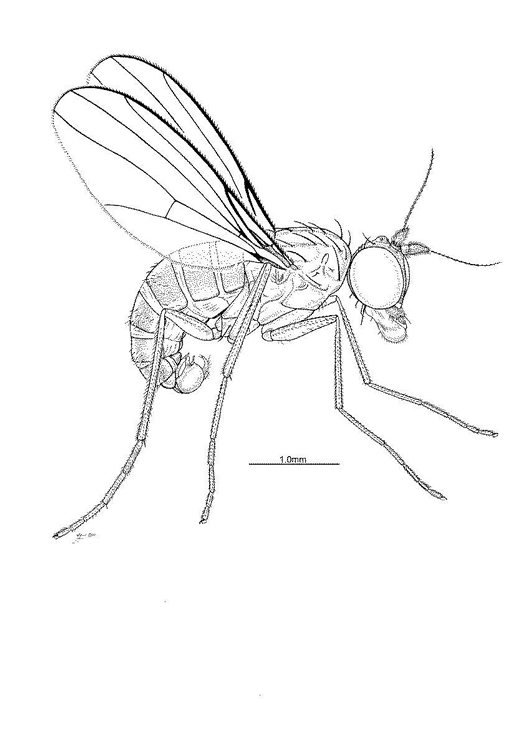Rare and poorly-known, meet a new genus of long-legged flies
Long-legged flies are tiny (1.0 – 5.0 mm), fragile flies that are both abundant and diverse in moist habitats. A new genus of long-legged flies, with three new species, has just been revealed. Named Pindaia, the genus is known from the forests of eastern Australia, New Caledonia, and New Guinea, and gives us a glipse into the rich diversity of flies in Australasia.
In my research, I often sort large samples of Australasian long-legged flies (family Dolichopodidae). Occasionally I find specimens that I can’t place into current genera, and tag them as “miscellaneous undescribed”. I tend to find so few specimens, they are set aside for future study.

© Australian Museum
Recently, while studying all the odd “leftover” taxa that had accumulated, I noted the similarity of New Caledonian and Australian specimens and determined that they should comprise the new genus, which I named Pindaia, after a New Caledonian place name, “Pindai”.
Flies in the genus Pindaia are associated with rainforests and wet sclerophyll forests of New Caledonia, southeastern Australia and montane New Guinea. These forests are known for a predominance of Gondwanan biodiversity, and reflect a time when these landmasses were physically connected and located much further south. These small flies are predators on tiny soft-bodied invertebrates such as mites and aphids.
The new genus is just one many such rare and enigmatic Australasian flies awaiting description, and gives us a glimpse into the rich and still poorly known biodiversity of Australasia.
Dr Dan Bickel
Research Scientist, AMRI
More information:
Bickel D.J. (2014). Pindaia (Diptera: Dolichopodidae) a new genus from New Caledonia and Australia, in Guilbert É., Grandcolas P., Jourdan H. & Robillard T. (eds), Zoologia Neocaledonica 8. Mémoires du Muséum national d’Histoire naturelle 209: 209-218.









